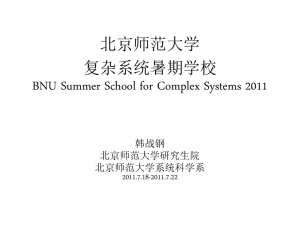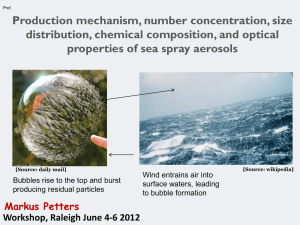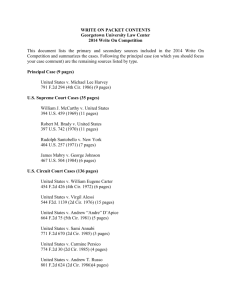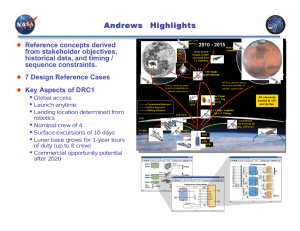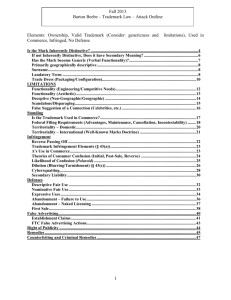Options and Bubble
advertisement
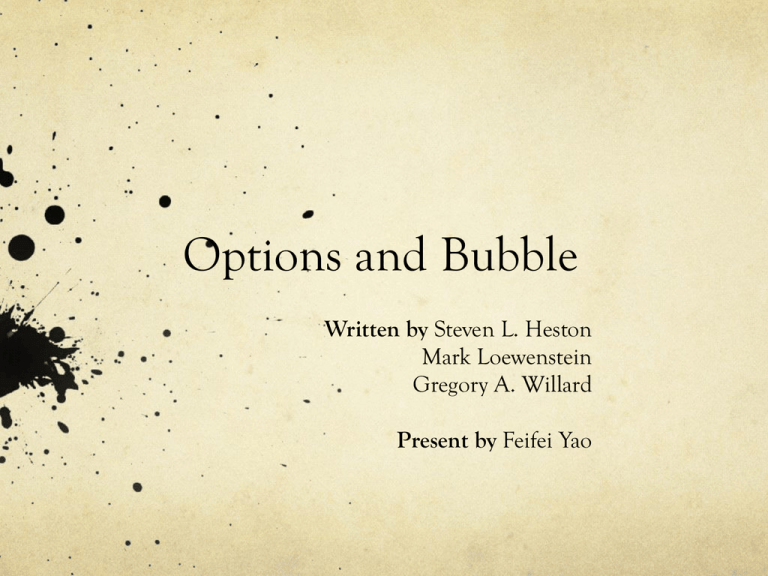
Options and Bubble Written by Steven L. Heston Mark Loewenstein Gregory A. Willard Present by Feifei Yao Definition Option Pricing Bubble: An asset with a nonnegative price has a "bubble” if there is a self-financing portfolio with pathwise nonnegative wealth that costs less than the asset and replicates the asset's price at a fixed future date.” Article Structure New solutions for CIR, CEV and Heston Stochastic Volatility model 3 Conditions to prevent the underlying assets from being dominated in diffusion models. Findings & Consequences CIR Model With linear risk premium ϕ0+ϕ1r, where ϕ0 ϕ1 are constants Riskless interest rate under P measure by Assume Given: A unit discount bond has a payout equal to one at maturity T. CIR Model Bond’s value G(r,t) satisfies the valuation PDE Define: One solution is using where CIR Model If inequality holds, but Then a cheapest solution is Note : G2 is nonnegative and less than G1 prior to maturity CIR Model There is no equivalence (local martingale measure ) Given Under measure P Under measure Q CIR Model G2 − G1 is negative, implying that arbitrage which bounded (>-1) temporary losses prior to closure The original CIR bond price has a bonded asset pricing bubble since G1 exceeds the replicating cost of G2 CEV Model Stock-Price process ZQ : Local stock return equal to r under a given equivalent change of measure Q A European call option pays max(ST - K,0) at maturity T. PDE Boundary conditions CEV Model Solution where The p1 satisfy Subject to CEV Model Using the probability density produce a new formula for CEV model Cheapest nonnegative solution subject to the boundary condition CEV Model There is an arbitrage even though an equivalent local martingale measure exists. There are assets pricing bubbles on options values, as well as on the stock price. Option bubble: G1- G2 Stock bubble: Set K= 0 in G1 formula so that G1=S Put-Call Parity or Risk-Neutral Option are mutually exclusive. Stochastic Volatility Model Stock price Stochastic variance Denote the time T payout of a European derivative by F(ST, V T) , PDE Subject to Stochastic Volatility Model Bubble: G2(S, V, t) = G1( S, V, t) + Π(V, t) Stock bubbles are not (mathematically) necessary for option bubbles. Condition 1 to rule out bubbles Absence of instantaneously profitable arbitrage Ensures the price of risk is finite Local price of risk (Sharpe ratio): Example CIR Condition 2 to rule out bubbles Absence of money market bubble Under stock price is given by The exponential local martingale has to be a strictly positive martingale Condition 3 to rule out bubbles Absence of stock bubbles There exists an equivalent local martingale measure Q, and the Q-exponential local martingale is a Q-martingale Where Findings & Consequences A European-style derivative security pays F(ST) at time T. The nonnegative solutions of G(S, Y, t) is Bubble for solution G The lowest cost of a replicating strategy with nonnegative value Findings & Consequences Risk-Neutral Pricing VS. Put-Call Parity American Options Lookback Call Option Furthermore… Personal Thoughts Betting Against the Stock Market: Buying Bear Funds Placing Put Options Shorting Stocks
